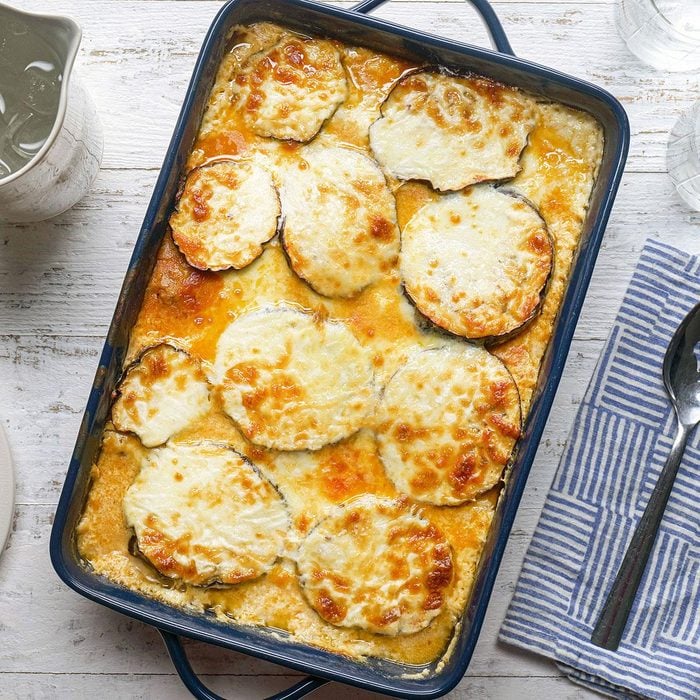There’s something especially comforting about oven-baked casseroles, no matter what’s inside the casserole dish. Whether lasagna, shepherd’s pie or a delicious moussaka like this one, casserole recipes are perfect for big gatherings and really any time you need a meal prepped in advance.
Traditional moussaka, one of the most famous Greek recipes, is made with layers of potatoes, eggplant, ground lamb and bechamel sauce. With Arabic roots, moussaka is a rich, satisfying dish that varies among households, often with recipes handed down over generations. In this recipe, you can use ground beef instead of lamb, or even use a combination of the two.
What’s the difference between moussaka and Greek lasagna?
Greek lasagna, also known as “pastitsio,” is another traditional Greek dish, but it’s different from moussaka. Pastitsio features layers of tubular pasta, meat and cheese, instead of layers of potatoes and eggplant in moussaka. Both dishes, however, are topped with bechamel sauce, a sauce often found in baked casseroles (see our bechamel lasagna).
Ingredients for Moussaka
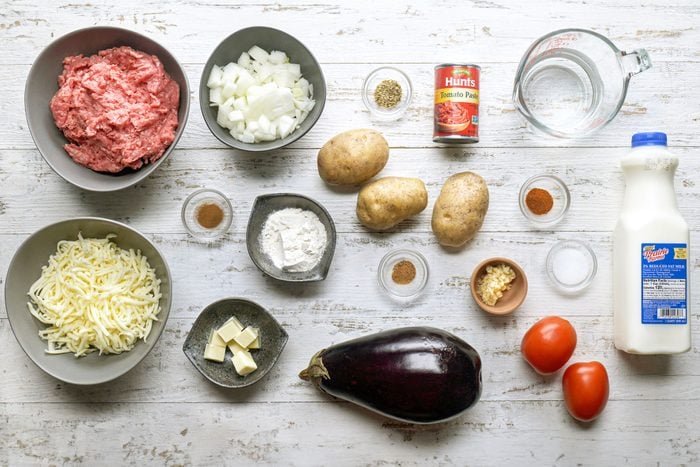
- Potatoes: Moussaka versions vary depending on their region, but the potato is often a key ingredient. Use any starchy potato like Yukon Gold or russet (here’s a primer on the different types of potatoes). Make sure your cooked potatoes are fork-tender; that way, they’ll be fully cooked in the final dish.
- Eggplant: Eggplant is a key ingredient in moussaka. Once you start cooking with this versatile vegetable, you’ll want all the eggplant recipes you can find.
- Ground lamb: Ground lamb is the traditional meat used in moussaka, though ground beef works as well.
- Tomatoes: Most recipes for moussaka contain tomato in some form. In this recipe, tomato paste adds extra umami flavor, and fresh tomatoes add freshness.
- Spices: The subtle hint of cinnamon, which pairs wonderfully with paprika and oregano, is iconic in moussaka.
- Flour: Flour is essential to a good bechamel sauce, which is the creamy white sauce layer of moussaka. When the flour cooks, it expands and acts as a thickening agent, ultimately giving the sauce a quintessential thick and creamy texture.
Directions
Step 1: Cook the potatoes and eggplant
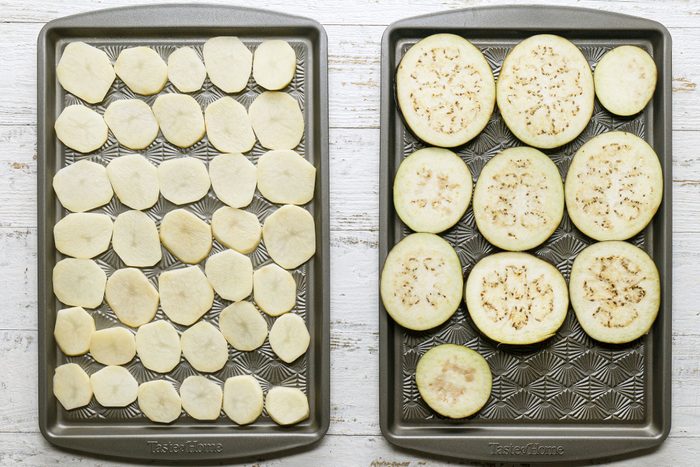
Preheat the oven to 450°F. Grease two baking sheets. Arrange the potato slices on one baking sheet, and the eggplant slices on the other, overlapping slices as needed. Bake until cooked through, about 20 minutes. Set aside, and reduce the oven setting to 400°.
Editor’s Tip: Eggplant softens a bit when it’s salted since salt draws the moisture out. If you’d like, sprinkle salt over both sides of the slices before baking, then let them sit on paper towels for about 15 minutes. This pulls the moisture out of the eggplant while taking away some of the bitterness.
Step 2: Cook the lamb
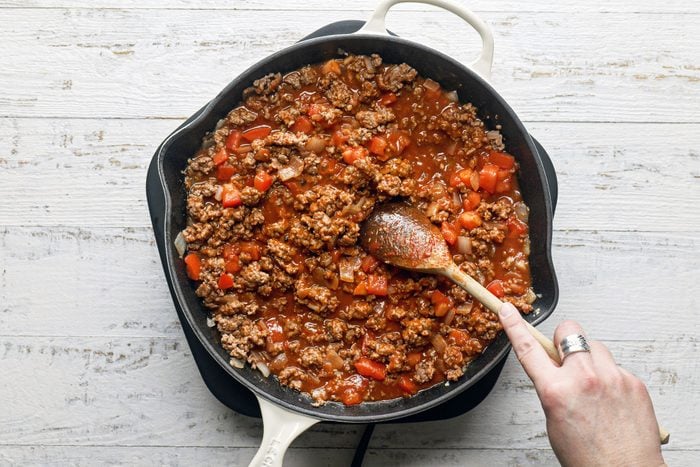
In a large skillet over medium-high heat, cook the lamb, onion and garlic until the meat is no longer pink, seven to nine minutes, using a wooden spoon or spatula to break up the meat as it cooks. Drain. Stir in the tomatoes, water, tomato paste, 1/4 teaspoon salt, oregano, paprika, cinnamon and 1/4 teaspoon nutmeg. Bring to a boil. Reduce the heat, and simmer, uncovered, for five minutes. Set aside while you make the bechamel.
Step 3: Make the bechamel
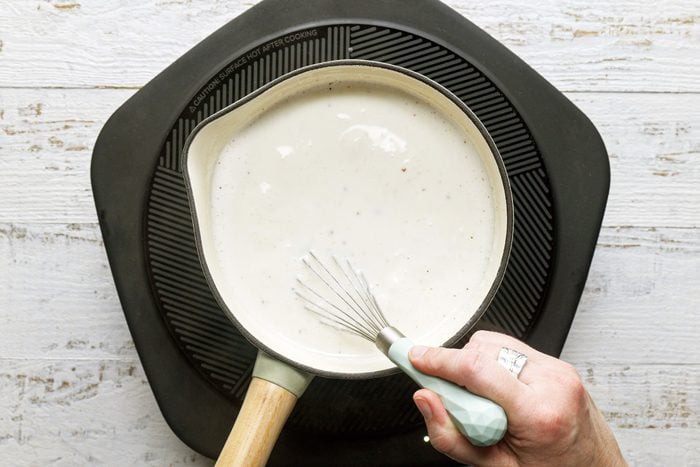
In a large saucepan, melt the butter over medium heat. Whisk in the flour until smooth. Gradually whisk in the milk. Bring the mixture to a boil, stirring constantly. Cook and stir until thickened, two to three minutes. Stir in remaining 1 teaspoon salt and 1/4 teaspoon nutmeg.
Step 4: Build the moussaka, and bake
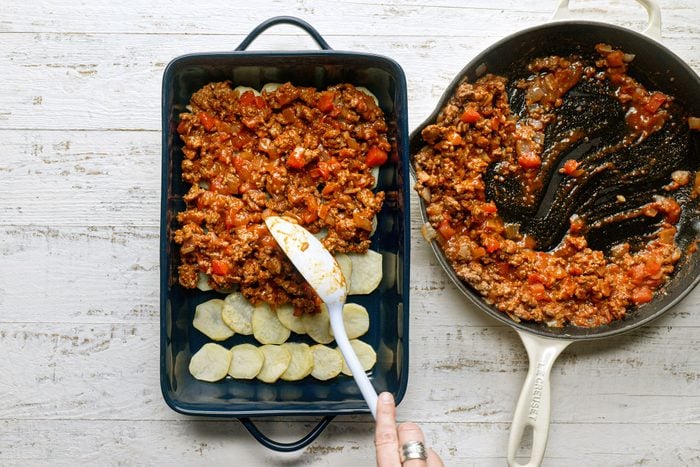
Grease a 13×9-inch baking dish. Arrange the parcooked potato slices on the bottom of the dish, overlapping as needed. Top with the lamb mixture, then the eggplant, overlapping slices as needed.
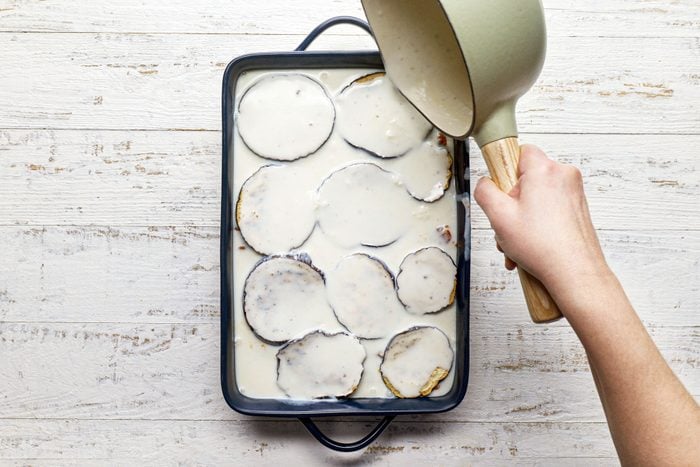
Pour the bechamel over the top, then even it out with a spatula. Sprinkle the mozzarella cheese over top. Bake, uncovered, until bubbly and golden brown, about 30 minutes, rotating the dish halfway through. Allow the dish to stand for 20 minutes before serving.
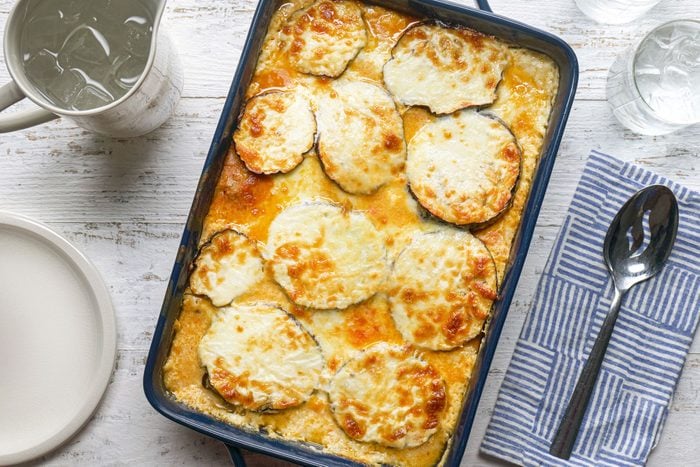
Recipe Variations for Moussaka
- Make it vegetarian: Moussaka is delicious with lamb or beef, but it’s also a great dish to make vegetarian. Substitute the meat with lentils, soy crumbles, or even slices of zucchini.
- Skip the potato or eggplant: Moussaka varies from region to region, sometimes looking more like a stew than a layered dish. But even Greek moussaka varies from recipe to recipe. Some include potatoes but not eggplant, and some contain eggplant but not potato. Skip the eggplant, and try this beef and potato moussaka variation!
Can you make moussaka ahead of time?
To save a bit of prep time, you can cook the potatoes and eggplant up to two days ahead. Store them separately in an airtight container.
How to Store Moussaka
Leftover moussaka can be stored in an airtight container in the fridge for up to one week. Just make sure you let it cool before popping it into the fridge.
Can you freeze moussaka?
We don’t recommend freezing moussaka. Here are some other freezer-friendly meals we suggest instead for longer-term storage.
Moussaka Tips
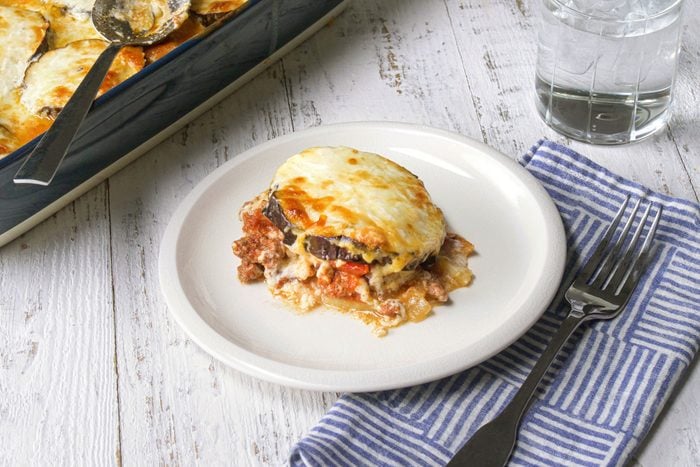
How do you cut eggplant for moussaka?
For this moussaka recipe, cut the eggplant crosswise into 1/2-inch-thick slices.
What do you serve with moussaka?
To serve alongside your moussaka, we recommend any of these traditional Greek dishes, especially the Greek salad.




















